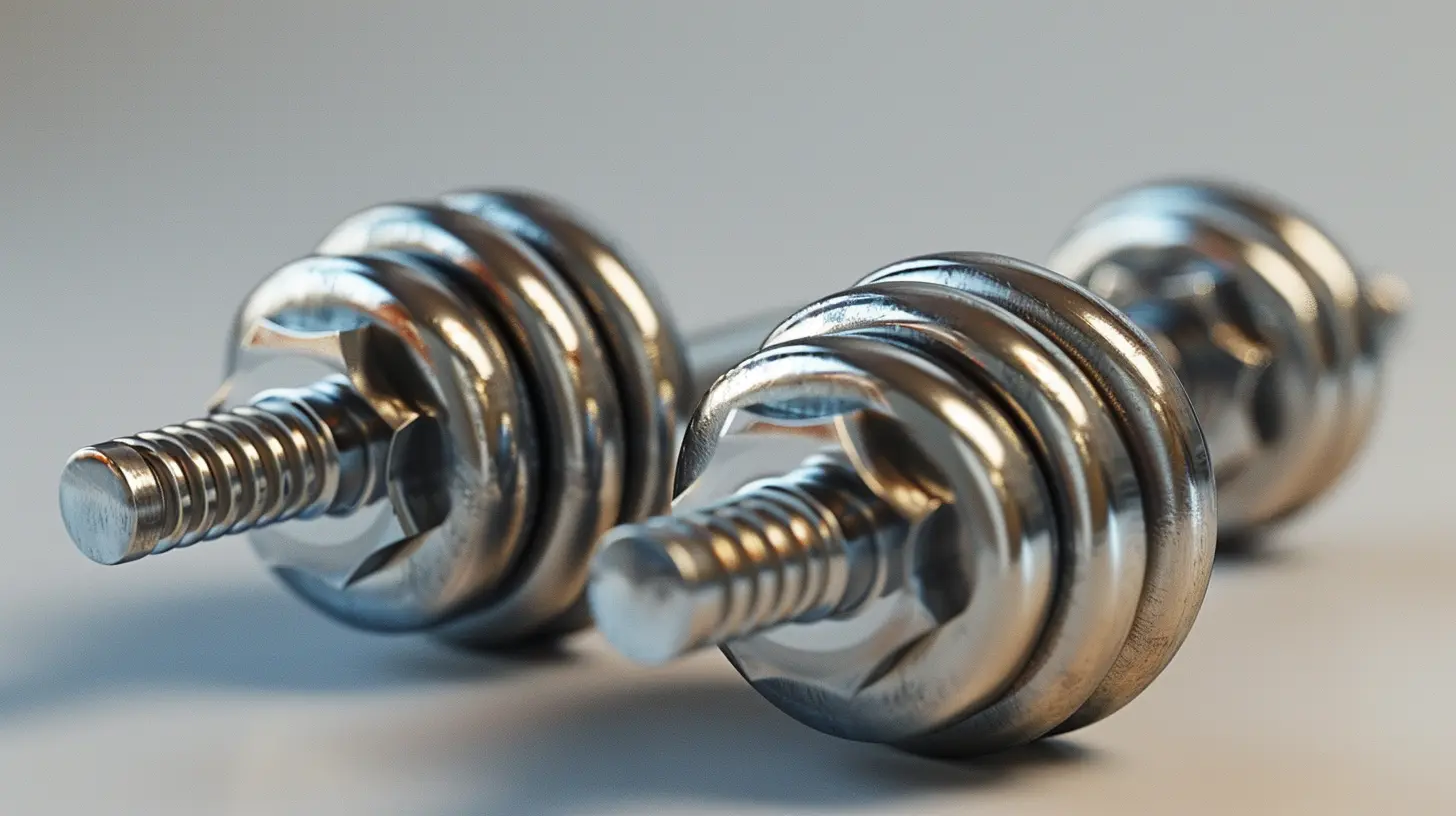13 March 2025
Have you ever felt like you’re putting in tons of effort at the gym but not seeing any progress? Your muscles aren’t growing, your stamina isn’t improving, and the scale stubbornly refuses to move? If that sounds familiar, you might be experiencing a fitness plateau. Don’t worry – it happens to the best of us. But the good news is that there are ways to break through these plateaus and keep making gains.
In this article, we’ll dive deep into understanding what causes these frustrating plateaus and, more importantly, how to avoid them. Let’s get started!

What Is a Fitness Plateau?
A fitness plateau occurs when your body stops responding to your current workout routine. Essentially, your progress stalls. This can happen in strength training, cardio, or weight loss efforts. You may notice that you’re no longer getting stronger, your endurance isn’t increasing, or you’ve hit a wall with fat loss.Why does this happen? Well, the human body is incredibly adaptable. Over time, it gets used to the same exercises and intensity levels, making them less effective. In short, your body gets comfortable, and while comfort is great for a cozy night in, it’s not ideal when you’re trying to crush your fitness goals!

Signs You’ve Hit a Plateau
So, how do you know if you’ve hit a fitness plateau? Here are a few telltale signs:- No Progress in Strength Gains: You’ve been lifting the same weight for weeks or months, and it’s not getting any easier.
- Stalled Weight Loss: The scale hasn’t budged, even though you’re maintaining your diet and workout routine.
- Reduced Motivation: You’re feeling mentally drained, bored, or unexcited about your workouts.
- No Change in Physical Appearance: Your body composition (muscle to fat ratio) isn’t changing, even though you’re putting in the work.
If any of these sound familiar, you’re probably in a fitness plateau. But don’t panic! Plateaus are a natural part of the fitness journey and can be overcome with the right adjustments.

Why Do Fitness Plateaus Happen?
Before we get into how to avoid plateaus, it’s important to understand why they occur in the first place. Here are some common reasons:1. Lack of Variety
Your body is a quick learner. When you repeat the same workouts week after week, your muscles adapt to the movements and become more efficient. While that’s great for energy conservation, it’s not so great for progress. If you’re doing the same exercises with the same intensity, your body won’t feel challenged anymore.2. Insufficient Recovery
Your muscles need time to repair and grow after being stressed during a workout. If you’re not giving your body enough rest, you might be overtraining. Over time, this can lead to burnout and hinder your progress. Remember, rest days are part of the process!3. Poor Nutrition
You’ve probably heard the saying, "You can’t out-train a bad diet," and it’s true. If you’re not fueling your body with the right nutrients, it can limit your ability to make progress. Whether you’re not eating enough, consuming too much junk food, or neglecting key nutrients like protein, your diet can hold you back.4. Mental Burnout
Sometimes, the plateau is more mental than physical. If you’re not excited about your workouts anymore or feel like you’re going through the motions, that mental fatigue can impact your performance. A lack of enthusiasm can be just as detrimental as physical exhaustion.5. Adapted Metabolism
Especially during weight loss, your body becomes more efficient over time, burning fewer calories for the same activities. This metabolic adaptation can make it harder to continue losing weight at the same pace.Now that we know why plateaus happen, let’s talk about how to avoid them.

How to Avoid Plateaus in Your Fitness Progress
1. Switch Up Your Workouts Regularly
One of the best ways to avoid a plateau is to keep your body guessing. If you’ve been doing the same workout routine for a while, it’s time to shake things up. Change your exercises, increase the weight, or try a new type of workout altogether.For example, if you’ve been strength training with machines, mix in some free weights or bodyweight exercises. If you’re a runner, try adding some interval training or switch to cycling. Variety is the spice of life, and it’s also the secret sauce to continued progress in fitness.
Pro Tip: Aim to change up your routine every 4-6 weeks to keep things fresh.
2. Progressive Overload
If there’s one thing you take away from this article, let it be this: Progressive overload is key to avoiding plateaus. This principle means gradually increasing the intensity of your workouts over time.You can do this by:
- Increasing the weight you’re lifting
- Increasing the number of reps or sets
- Decreasing your rest time between sets
- Adding more challenging variations of exercises
The goal is to keep challenging your muscles, so they continue to grow and adapt.
3. Prioritize Recovery
Rest and recovery are just as important as your time in the gym. In fact, your muscles don’t actually grow while you’re working out; they grow during rest. If you’re working out hard every day without giving your body time to recover, you’re not giving your muscles a chance to rebuild stronger.Make sure to:
- Get enough sleep (aim for 7-9 hours a night)
- Incorporate rest days into your routine
- Try active recovery like yoga or stretching
- Use recovery tools like foam rollers or massage guns
Remember, more isn’t always better. Workouts break your muscles down, but rest days build them back up!
4. Dial In Your Nutrition
Your diet plays a massive role in your fitness progress. If you’re not eating enough protein, carbs, and healthy fats, your body won’t have the fuel it needs to recover and grow stronger.Here are a few nutritional tips to avoid a plateau:
- Eat enough protein to support muscle repair and growth (aim for 0.7-1.0 grams of protein per pound of body weight).
- Stay hydrated – dehydration can make your workouts feel harder and slow down recovery.
- If you’re trying to lose weight, make sure you’re in a caloric deficit, but not too extreme (a 500-calorie daily deficit is a good starting point).
- Consider adding more whole foods like fruits, vegetables, lean meats, and grains to your diet.
Proper nutrition is like putting premium fuel in your car – it keeps everything running smoothly.
5. Set Short-Term Goals
Long-term goals are great, but sometimes they can feel far off. Setting short-term goals can help keep you motivated and focused. For instance, instead of saying, “I want to lose 30 pounds,” try setting a goal like “I want to lose 5 pounds in the next month” or “I want to increase my squat by 10 pounds in the next 4 weeks.”Achieving smaller milestones gives you a sense of accomplishment and keeps you moving forward.
6. Listen to Your Body
It’s easy to get caught up in the grind and ignore the signals your body is sending you. But if you’re feeling extra sore, fatigued, or mentally drained, it might be time to take a step back and reassess.Ignoring these signs can lead to overtraining, which can actually make your plateau worse. Take a few days off if needed and come back stronger and more focused.
7. Incorporate Periodization
Periodization is a fancy term for cycling through different phases of training to prevent burnout and plateaus. For example, you might focus on heavy lifting for a few weeks, then switch to higher reps with lighter weights, followed by a period of endurance training.This approach keeps your body from getting too comfortable with any one type of training and ensures long-term progress.
8. Stay Mentally Engaged
Sometimes, a plateau isn’t physical at all – it’s mental. If you’re bored with your routine or feel like you’re just going through the motions, it might be time to mix things up. Try a new sport, take a fitness class, or work out with a friend. Keeping your mind engaged is just as important as challenging your muscles.Final Thoughts
Fitness plateaus can be frustrating, but they’re a normal part of the process. The key is to recognize when you’ve hit a plateau and make adjustments to keep moving forward. By switching up your workouts, prioritizing recovery, fine-tuning your nutrition, and staying mentally engaged, you can avoid plateaus and continue making progress toward your fitness goals.Remember, fitness is a journey, not a destination. There will be ups and downs, but with the right mindset and strategies, you can overcome any obstacle that comes your way. Keep pushing, keep challenging yourself, and you’ll break through those plateaus in no time!













Mindy Thomas
Embrace variety and stay adaptable; changing routines and setting new goals can reignite motivation and spark continued growth in your fitness journey.
April 8, 2025 at 12:56 PM